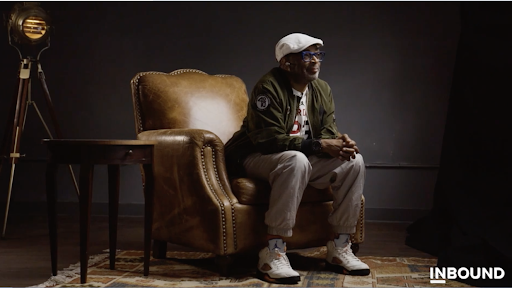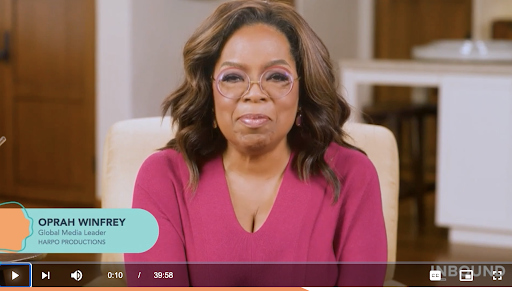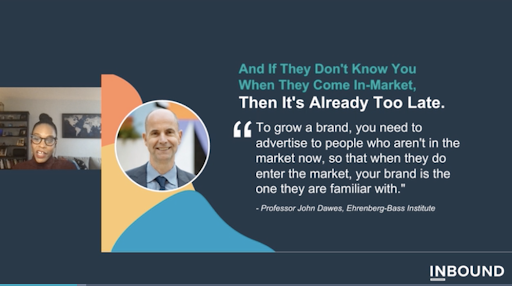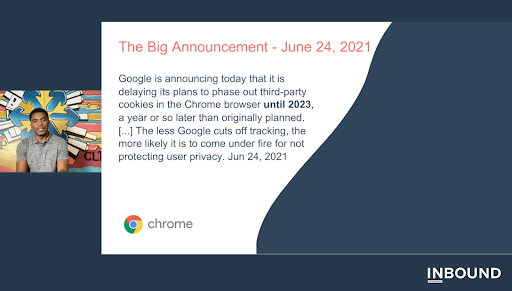Share article:
HubSpot’s INBOUND 2021 Highlights: What you need to know

This year marked the 10th annual HubSpot INBOUND conference, which began on October 12 and ended on October 14. Event Pass holders can access the content library on the original event website, and numerous videos from the conference are free on YouTube. INBOUND 2021 was built for the remote world and was entirely virtual. And it’s gone beyond a marketing event, now focusing on the intersection of marketing, sales, and customer success. With this in mind, conference attendees chose from five tracks: marketing, sales, customer success, HubSpot academy, and RevOps.
In this blog, we’ll capture the highlights of the event, from HubSpot’s most significant announcements to the best advice from some of the world’s biggest names in entertainment and business to success secrets you can apply to your business today. Finally, we’ll summarise key new features available from HubSpot.
HubSpot’s take
According to HubSpot, the event was a “fully immersive, online experience that provided access to transformative business trends, proactive conversations, and key actionable takeaways. Tens of thousands of global attendees were able to connect with leaders across industries and spark catalysts that they weren’t even aware existed.”
INBOUND offered an opportunity to hear from HubSpot’s executive leadership team. There were appearances from HubSpot’s co-founder and CTO, Dharmesh Shah, and co-founder and executive chairman Brian Halligan. Yamini Rangan, the newly appointed HubSpot CEO, also made her debut.
Dharmesh Shah HubSpot co-founder and CTO
Mr Shaw delivered an exceptional presentation about the emerging customer dynamic. His session was simultaneously slick and down-to-earth. He mentioned an alarming survey that revealed 27% of people had a customer experience that ruined their entire day and that one in 10 had such a terrible customer experience they cried. Remarkably, no one has presented this information, yet so many of us have had these experiences, making his session relevant for all of us.
He also dove into a topic he calls Web 3, the next generation of the Internet. But, before Shaw broke it down, he outlined the evolution of the web.
Web 1: Information
Web 2: Interaction
Web 3: Decentralisation
Sharing that he’s excited to the point of goosebumps about Web 3, Shaw said, “It’s about putting power back in the hands of people; it’s the way the Web was always supposed to be.” And he further explained that in a Web 3 world, you own and control your personal data. Big tech no longer owns it, and he gave examples like the cryptocurrency market. Shaw concluded by stating that we’re in the age of the customer, “Embrace the idea that we’re in the age of the customer. Embrace the idea that over time customers are going to have more and more power, and they’re going to be equal partners in their relationship with us.”
Embrace the idea that we’re in the age of the customer. Embrace the idea that over time customers are going to have more and more power and they’re going to be equal partners in their relationship with us.
Dharmesh Shah HubSpot co-founder and CTO
Brian Halligan HubSpot co-founder and executive chairman
After recovering from a severe snowmobile accident, Mr Halligan returned to HubSpot as executive chairman. He sat with Ms Rangan and Andrew Lindsay, HubSpot’s SVP of Corporate and Business Development at HubSpot headquarters in Boston, for a chat.
Halligan shared, “I’m a starter. I started HubSpot 15 years ago. I’ve been a CEO, and it was going great. But it’s a different animal. We have thousands of employees, hundreds of thousands of customers, billions in revenue. This is a much larger scale company, and I’ve never seen that movie before.”
He highlighted Rangan’s outstanding performance during his 6-months out of the business, along with her experience leading large organisations, stating, “she’s not just a culture fit, she’s a culture add.” And concluding, “it became a no brainer” for her to become CEO.
When asked about customers, Halligan said, “We’re right at the beginning of a major migratory change for buyers.” He added, “B2B buyers are starting to look a lot more like B2C buyers. Going further, he shared, “If I had advice for our customers and partners, it’s how do we get a little bit of that carbon-based life form (human) out of the buying process. How do we lower the friction and use technology to accelerate it.” Finally, he urged businesses to move beyond linear go-to-market strategies toward fly-wheel customer-centric experiences.
If I had advice for our customers and partners it’s how do we get a little bit of that carbon-based life form (human) out of the buying process. How do we lower the friction and use technology to accelerate it.
Brian Halligan HubSpot co-founder and executive chairman
Yamini Rangan HubSpot CEO
Ms Yamini shared her experience growing up in a small town in India, pursuing education, and working her way up. She also discussed the strong emotion she felt when presented with the opportunity to be the CEO of HubSpot.
“Companies that grow very rapidly end up in silos and therefore expect me, the customer, to become the bridge,” she added. “Look at it from the customer’s point of view, not from a function or department.”
When asked how HubSpot approaches CRM, she said, “The way we approach CRM is about buyer empowerment, not seller enablement.” She went on to say that people no longer call you to learn about your product. Instead, they visit your website to research and only reach out when they’re ready to buy.
A visual feast and avatars too
Leave it to HubSpot, the people who essentially invented inbound marketing, to create a gorgeous, captivating experience from start to finish. The company’s culture dazzled from the event web pages to pre-show communications to each of the carefully crafted sessions. What other tech business calls user groups “HUGs” and talks about “love,” and does it all with so much panache?
The virtual networking options available this year, which allowed participants to connect online, were a highlight. Although it was undoubtedly a new experience to see your headshot above a cartoon body, it was nevertheless charming and innovative. With the surge in virtual events since the start of the pandemic, the HubSpot team stood out by understanding the top priority is grabbing and maintaining attention. As a result, INBOUND 2021 was visually and experientially arresting, making it much less likely for participants to be distracted by incoming messages, as with most online conferences.
Best quotes from INBOUND’s all-star speaker line-up
I have to connect to the story. I don’t worry about the audience. The audience won’t connect to it if I don’t connect.
Spike Lee, Writer, and Filmmaker

Our workplace promise is that every voice matters and everybody belongs. When we first put the values up I said ok, these values are on the walls but they will also operate in the halls. This will be values-based employment.
Cynt Marshall, Dallas Mavericks, CEO
You just gotta do you and figure it out as you go, because you never know if what you experience is going to be relevant later.
David Chang, Chef, and Founder, Momofuku
Being a new brand and product to market, we really valued the ability to have a direct relationship with the customer and understand intimately what the customer liked and didn’t like, which you lose when you go through a third party retailer.
Sarah Paiji Yoo, Blueland, Co-founder and CEO
We all have these weird crazy superpowers and yet we benefit from one another’s perspectives and opinions.
Hasan Minhaj, Host of Patriot Act with Hasan Minhaj
Here’s what I have to offer you today. The idea of a more intentional life. And what does that mean? It means a life that you design based on who you are and who you wish to become.
Oprah Winfrey, Harpo Productions, Global Media Leader

Four Standout INBOUND 2021 Sessions
1. How B2B Brands Grow – Ty Heath and Jon Lombardo
LinkedIn’s B2B Institute partnered with the Ehrenberg-Bass Institute to outline the laws marketers must follow to grow. The session began with Ms Heath addressing the power of brand and explaining that marketing aims to link the brand to more buying situations. She then debunked the top-down funnel model, flipping it on its side while sharing a two-state customer model where all customers are either “in-market” or “out-market”. She also addressed that it’s already too late if in-market customers don’t know about your brand when it’s time to buy.

2. Email Myths Busted – Jay Schwedelson
This high-energy session began with a discussion of how the pandemic opened Pandora’s box of email tactics. Next, Mr Schwedelson addressed sending emails from people’s names vs. brand names, which is a hot email trend for BtoB companies, with a 450% increase in use in the last six months because it delivers a 38% increase in open rates. He then talked about the fake-forward tactic, which he says is surging in BtoB and BtoC. The risk for both of these tactics? Opt-outs. His recommendation? Don’t use these tactics.
Instead, he recommends adding specific characters to your subject lines. For example, open rates for BtoB companies increase 25% with an asterisk*, [18% with brackets], and (27% with parentheses). Another way to win right now with email? The fake-mistake email. This approach works by saying something like, “Oops, you almost scrolled past this,” within the subject line. This tactic gives you a 29% boost in BtoC email open rates and a 37% increase in BtoB email open rates. Of all INBOUND 2021 sessions, this one likely offered the most real-world tactics to apply today.
3. No More Cookie Cutter Marketing – Alex Moore
Mr Moore’s first topic was to address the update heard worldwide when Google announced the end of its third-party cookie support effective two years from January 14, 2020. While it’s still on the horizon, Google announced a delay in phasing out third-party cookies until 2023, giving us all more time to adjust our approach to digital marketing.

His talk then dove into three main areas:
- Data privacy: He shared his perspective that data privacy and policy were an intersection driven by GDPR. Thus, creating a growing desire to protect consumer data through the introduction of new rules and regulations.
- Cookie 101 and third-party cookies: He then explained the three types of cookies:
- First-party cookies: He shared that first-party cookies allow you to monitor general user behaviour on your website.
- Second-party cookies: He briefly mentioned 2nd-party cookies, which are website behaviours shared among partners and are relatively uncommon.
- Third-party cookies: Finally, he addressed third-party cookies which allow organisations to track a user’s behaviour across multiple websites. How common is the use of third-party cookies? Very. If you’re doing digital advertising or overseeing a website, you’re using third-party cookies today. And this is a significant problem for Google (and other digital companies), with up to 80% of Google’s revenue tied to third-party cookie use.
- The future of digital marketing: What does this mean for marketing in the future? First, digital advertising will change and likely recede. Retargeting, as we know it today, frequency capping, and view-through attribution will disappear. While targeting will continue, it will look very different. Instead of individual identity, the current roadmap focuses on clusters of groups or cohorts (with the latest guidelines being that you must have at least 100 identities per group).
Several major digital companies are striving to set the standard for the new third-party cookie alternative. His biggest recommendation is that marketers return to the basics and focus on strategies like account-based marketing, segmentation, messaging, and more sophisticated marketing analytics skills. Whereas digital marketing has lowered entry barriers, marketers will need to brush up on traditional marketing skills and techniques. Finally, websites will need to deliver an exceptional user experience for companies that want to continue to compete.
4. Grow Your Business Through Lead Value With Google- Neha Chadha
The session began with Ms Chadha addressing the increasingly noisy digital environment in a post-pandemic world. Sharing a report, “The State of B2B Digital Commerce,” from 2Checkout, she shared that 46% of B2B leaders say finding new leads is a challenge, and 40% of CMOs are struggling to understand the nature of temporary and permanent shifts in consumer behaviour. The primary challenges for marketing and content professionals are breaking through the digital noise, maintaining brand consistency, and adjusting messaging. The remainder of the session focused on solving these challenges.
To tap into intent, Chadha recommends getting in front of consumers while conducting market research with paid search. She shared that it’s crucial to continually analyse results to optimise top performers and suggests marketers leverage automated bidding to control costs to optimise paid search. To inspire and convert, she recommends messaging that focuses on meeting customer needs by solving their challenges.
Six significant new features from HubSpot
HubSpot continues to invest in its platform. With over 121,000 customers worldwide, the company has built a massive community of users relying on their automation solutions to connect, convert, and support customers. During INBOUND 2021, the latest new features were revealed, including:
- New admin tools.
These new tools contain a recommended list of permissions based on the role of each team member. You can monitor user activity, access, security activity, along with any exported content. Your organisation can also improve collaboration by providing access to additional users and team members. - Service hub customer portal.
This new feature allows customers to access important information when they need it through HubSpot’s customer portals. Customers can access project status within the portal, manage support tickets, browse their content knowledge base, and keep track of every communication in one centralised location. HubSpot also allows organisations to customise these portals with branded colours and logos. - HubSpot payments.
HubSpot’s new payment feature was built natively within the platform. It makes it easy to include a secure payment link in customer communications, including quotes, live chats, and emails. This feature is currently only available in the United States. - Custom feedback surveys.
You can create surveys or use one of the pre-built net promoter score (NPS), customer effort score (CES), or customer satisfaction (CSAT) survey templates to gain customer feedback quickly. The surveys are easy to share, with intuitive reports to analyse data. - Custom report builder.
HubSpot’s new custom report builder allows you to create reports that work best for your organisation. It also guides you to ensure you collect and report on what’s most relevant. Finally, it makes it easy for team members to access it when they need it. - Sandbox environment for enterprise customers.
Enterprise-level customers can now explore a secure environment to build and test new workflows, integrations, web pages, and more.
INBOUND 2022
Planning for HubSpot’s INBOUND 2022 is already well underway. According to HubSpot, INBOUND 2022 will be “one of our biggest INBOUND experiences yet!” In the meantime, powerhouse pass holders can still access the platform and on-demand content library throughout the year.
Final thoughts, further reading
HubSpot INBOUND 2021 was a powerful event that left attendees fired up about putting customers first and creating new and more meaningful connections.
As a HubSpot partner, we both sponsored and attended INBOUND 2021. We offer a 5-star rated SMS-for-HubSpot app that helps teams make better connections.
The benefits of SMS for HubSpot are clear:
- Open rates at 98%
- Nearly instant delivery
- Typically read in 90 seconds
- Read rates 8x greater than email
- You can automate it
If you’re not sure where to start, our team of HubSpot SMS experts can help. You can learn more about our HubSpot native texting app here.
For more on SMS for HubSpot, be sure to check out:
Video: Magnify the power of your HubSpot workflows with SMS
eBook: 30 SMS templates for marketing, sales and customer success
Webinar: How to Implement a Cross Channel Communications Strategy with MessageMedia
